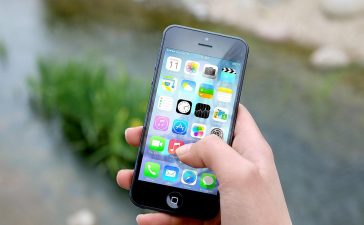In the realm of technological innovation, few advancements have generated as much excitement as Augmented Reality (AR). Augmented Reality overlays digital information onto the real world, blending the physical and digital realms in ways that were once confined to science fiction. From enhancing daily tasks to transforming industries, AR is redefining our interaction with the environment. In this article, we’ll explore some of the groundbreaking gadgets that are making AR a part of our everyday lives.
What is Augmented Reality?
Augmented Reality differs from Virtual Reality (VR) in that it doesn’t create an entirely new environment; instead, it enhances what we already see. AR tech utilizes a combination of hardware and software, including cameras, sensors, and display devices, to add digital elements to physical spaces. The potential applications range from gaming and education to healthcare and retail.
Standout Gadgets of Augmented Reality
1. Smart Glasses
Perhaps the most recognizable AR gadgets are smart glasses. Leading the charge are devices like Microsoft’s HoloLens 2 and Google Glass Enterprise Edition 2. These wearables allow users to see holograms overlaid in their field of view, enabling experiences like remote assistance, 3D modeling, and immersive training. HoloLens 2, for instance, is being used in industries such as construction, healthcare, and manufacturing to streamline processes and enhance productivity.
2. Mobile Devices
Smartphones and tablets equipped with AR capabilities boast some of the most accessible applications. Apple’s ARKit and Google’s ARCore allow developers to create apps that utilize a device’s camera and motion sensors to display augmented experiences. Games like Pokémon GO have revolutionized mobile gaming, encouraging users to explore physical spaces while engaging with virtual elements. Beyond entertainment, AR apps can aid in navigation, home design, and even educational experiences that enrich learning through interactive elements.
3. AR Headsets
Niche markets have emerged around specialized AR headsets. Devices like Magic Leap One focus on creating highly detailed augmented experiences tailored for enterprise use. With the potential to merge digital content seamlessly into the real world, these headsets are proving advantageous for design simulations, collaborative work, and immersive virtual meetings.
4. Wearable Devices
Smart rings and watches are entering the augmented reality conversation as well. For instance, Vive Flow is a wearable VR headset that emphasizes comfort and portability, potentially blurring the lines between AR and VR experiences and enabling quicker access to immersive content throughout the day.
5. Interactive Projections
AR doesn’t have to rely solely on devices worn by users; projection-based AR systems can transform environments. Utilizing advanced projection mapping technologies, these systems display interactive elements on any surface, turning walls, floors, or even streets into dynamic canvases. This has immense potential in advertising, art installations, and public information systems.
Applications of Augmented Reality
1. Education
The educational sector is witnessing a seismic shift with the integration of AR. Interactive lessons can become more engaging by visualizing complex concepts in real time. For example, students can explore the solar system, dissect anatomical models, or even simulate historical events.
2. Healthcare
In medicine, AR devices assist surgeons by overlaying critical information such as patient scans directly onto their field of view, enhancing precision during surgical procedures. Training programs also utilize AR simulations to prepare future doctors in a risk-free environment.
3. Retail
AR is changing the shopping experience. Retailers like IKEA and Sephora use AR to allow customers to visualize products in their own spaces or even “try on” makeup virtually. This technology creates a more personalized shopping experience, which can lead to higher customer satisfaction and reduced return rates.
4. Tourism and Navigation
AR applications in tourism can provide enriched experiences by offering historical context tied to physical landmarks or even language translation on the go. Navigation apps can overlay directional arrows and points of interest on real-world views, making wayfinding more intuitive than ever.
The Future of Augmented Reality
The future of augmented reality is bright, with rapid advancements paving the way for even more sophisticated gadgets and applications. As technologies such as 5G improve connectivity, the possibilities for real-time, high-quality AR experiences will become more extensive. We can expect to see a rise in hybrid developments that marry AR with AI, creating systems that learn from user interactions and provide tailored experiences.
Conclusion
Augmented Reality is more than just a technological trend; it’s a transformative force that is reshaping how we perceive and interact with the world around us. As gadgets evolve, the integration of AR into everyday life will only deepen, offering unprecedented opportunities across various fields. Whether through smart glasses, mobile apps, or interactive projections, AR is set to change our reality, enhancing the way we work, learn, and play. As we embrace this cutting-edge technology, it’s clear that the future holds exciting new horizons.






